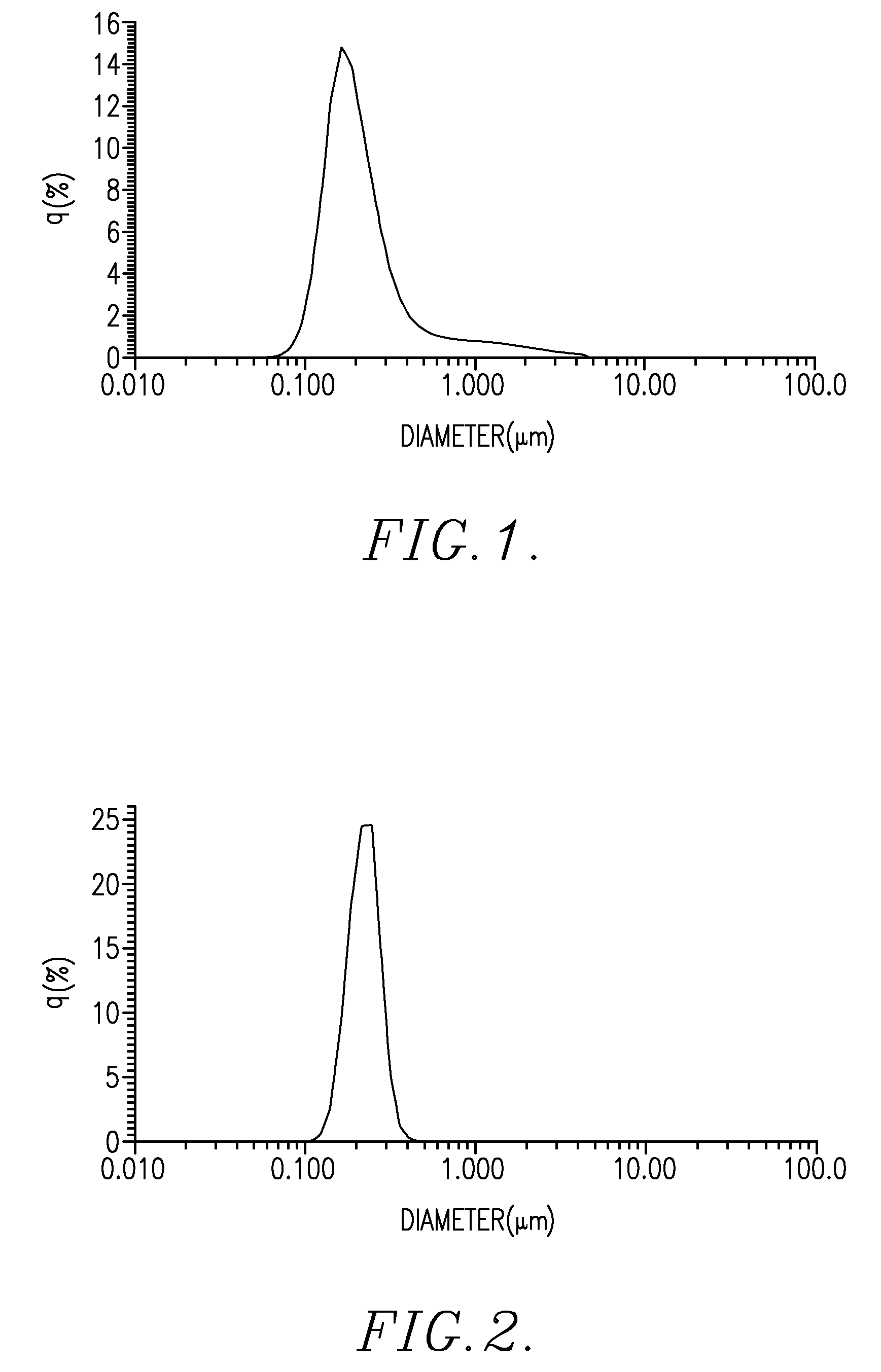Lewis acid and oil-soluble hybrid pesticide concentrate that spontaneously forms a water-based microemulsion
a technology of oil-soluble hybrid pesticides and concentrates, applied in the direction of heterocyclic compound active ingredients, anhydride/acid/halide active ingredients, biocide, etc., can solve the problem that additives that reduce the acidity of concentrates do not protect concentrates from chemical and physical instability
- Summary
- Abstract
- Description
- Claims
- Application Information
AI Technical Summary
Benefits of technology
Problems solved by technology
Method used
Image
Examples
example 1
[0029]
IngredientWt (%)Dithiopyr* (93.7%)1.62%2-4,D** (97.9%)10.74%Quinclorac** (98.0%)4.41%Dicamba** (98.0%)1.11%Pyraflufen-ethyl* (92.0%)0.45%Propylene Carbonate6.12%Hexylene Glycol24.49%Glycerol24.49%Triton X-10012.15%DEA (98%)14.43%Five-way active - two oil soluble* pesticides and three initially Lewis acid** pesticides.
[0030]A direct electrical potential analysis of the concentrate of Example 1 yielded a value of −104 mV.
[0031]Four percent by weight of the concentrate of Example 1 was diluted with water to form three microemulsion samples. FIG. 1 is a graphical representation of the analyses of the three samples using the Horiba LA 950 particle size distribution analyzer. The median particle size of the three samples was found to be of the order of 0.19μ. The 4% solution of the concentrate of Example 1 in de-ionized water yielded an electrical potential value of −82 mV.
example 2
[0032]
IngredientWt (%)Dithiopyr* (93.7%)4.51%2-4,D** (97.9%)10.53%R(+) MCPP** (90.8%)5.68%Dicamba** (98.0%)1.05%Propylene Carbonate6.44%Hexylene Glycol25.78%Glycerol25.78%Triton X-10011.37%DEA (98%)8.87%Four-way active - one oil soluble* pesticide and three initially Lewis acid** pesticides.
[0033]A direct electrical potential analysis of the concentrate of Example 2 yielded a value of −20 mV.
[0034]Two percent by weight of the concentrate of Example 2 was diluted with water to form three microemulsion samples. FIG. 1 is a graphical representation of the analyses of the three samples using the Horiba LA 950 particle size distribution analyzer. The median particle size of the three samples was found to be of the order of 0.2μ. The 2% solution of the concentrate of Example 1 in de-ionized water yielded an electrical potential value of +108 mV.
example 3
[0035]
IngredientWt (%)Chlorflurenol* (93.7%)2.75%R(+) MCPP** (97.9%)4.38%Propylene Carbonate9.61%Hexylene Glycol31.63%Glycerol31.63%Triton X-1009.62%DEA (98%)10.38%Two-way active - one oil soluble* pesticide and one initially Lewis acid** pesticide.
A pesticide microemulsion formulation prepared using, for example, the concentrate of Examples 1, 2, or 3 may be prepared by adding from about 1% to about 10% by weight of the concentrate, preferably from about 1% to about 4% by weight of the concentrate, and most preferably from about 2% to about 4% by weight of the concentrate in water of dilution.
PUM
| Property | Measurement | Unit |
|---|---|---|
| electrical potential | aaaaa | aaaaa |
| electrical potential | aaaaa | aaaaa |
| electrical potential | aaaaa | aaaaa |
Abstract
Description
Claims
Application Information
 Login to View More
Login to View More - R&D
- Intellectual Property
- Life Sciences
- Materials
- Tech Scout
- Unparalleled Data Quality
- Higher Quality Content
- 60% Fewer Hallucinations
Browse by: Latest US Patents, China's latest patents, Technical Efficacy Thesaurus, Application Domain, Technology Topic, Popular Technical Reports.
© 2025 PatSnap. All rights reserved.Legal|Privacy policy|Modern Slavery Act Transparency Statement|Sitemap|About US| Contact US: help@patsnap.com



